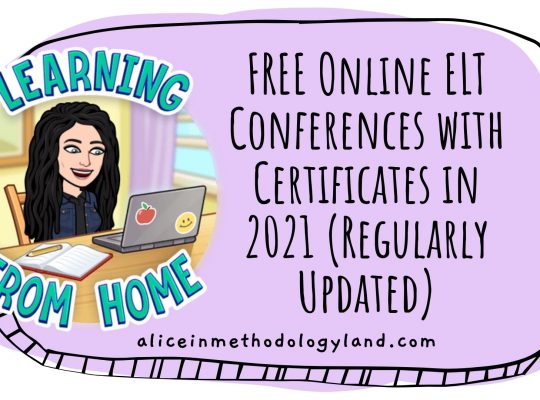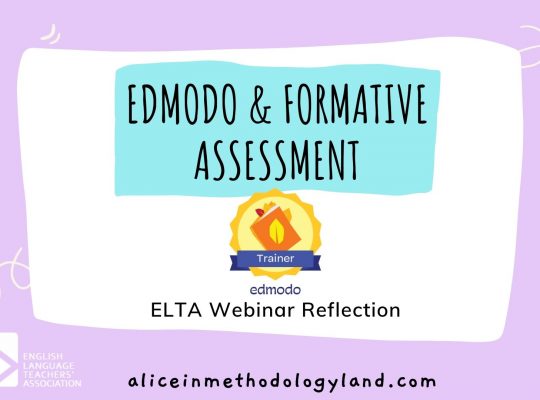
How do we develop a learning environment where grammar is learned through exploration without burnout? Keep reading, for example, activities of thematic contextual grammar activities that simultaneously develop the four language skills. Then, let’s see how we can apply contextual grammar teaching with some easy activities!

What is contextual grammar teaching and what kind of activities are recommended?
The eternal debate of teaching grammar implicitly or explicitly will probably never cease. This debate created the need for further research, and now almost all researchers agree that grammar should not be taught explicitly. (Goode, 2000; Sams, 2003;). The rationale for teaching grammar in such a way is early language acquisition – children learn their native language through an authentic context. They can speak it perfectly without anyone explaining what is present simple or past simple. So how can we use this to contextualize grammar instruction? We can start by forgetting frontal teaching and drilling and use authentic language in books, films, newspapers, and even songs.
Why should we avoid explicit grammar teaching?
Traditional grammar instruction requires memorizing grammar rules and terminology, along with drills and labeling of sentence parts in various textbooks. Unfortunately, even older dated research has proven that this method has little or no effect on improving student’s writing and language skills in general. (Meyer, 1986; Seliger, 1979).
How can we contextualize grammar?
Exploration instead of explanation is a great starting point for all teachers struggling to develop a contextually based approach to grammar. Your lesson planning process may experience ups and downs, but the positive results will ultimately outnumber the negative ones.
- Teach thematically – Your student wants to travel and practice travel English so there is no time for grammar? In this case, you can easily introduce modal verbs by practicing ordering in a restaurant and discussing the menu with the waiter.
- Contextualize – Use authentic films, books, articles, and songs. By doing that, we are presenting grammar as a part of language and communication, not just as a tedious thing that has to be learned for the test.
- Incorporate all skills – By incorporating all language skills, the new grammar is used immediately, and by recycling the same grammar form through all the four language skills, the student will seamlessly acquire the grammar form.
Here are three main groups of activities in contextual grammar teaching:
Using music and songs
The ideas from a song, the rhythm, and for younger children, even movement can easily captivate your student’s attention. By doing this, students can discover the grammar by themselves, and the grammar becomes a conversation topic. Remembering past perfect is much easier by connecting it with a song.
You can use MyEnglishPages while you learn how to develop a contextual grammar lesson based on a song. You can start your lesson by speaking while using karaoke and discussing the topic of the song. Then you can switch to listening by sharing a fill-in-the-blanks worksheet for a specific grammar form, which will ultimately lead to grammar discovery and writing, or rewriting sentences.
Short stories or books
For this occasion, you can select a short passage from a book or a short story. If students provide you with their favorite reading material, that’s even better. Start by reading and discussing the content. You can then search for a specific grammar form and discuss how it is used in that sentence. Finally, you can finish the reading by paraphrasing or reporting the sentence. This kind of grammar discovery deepens the understanding of the mother tongue and foreign language as well.
To practice writing and speaking, you can focus on a specific grammar form – for example, write an essay and put the short story into the past tense, or do an oral exercise where you will change the adverbs in the text to see how the meaning of the sentence changes. There is no end to what you can do with a text – It all depends on your syllabus and student’s learning gaps.
Activities with films or video clips
Films and video clips are great tools for students who do not enjoy reading. The instruction can start by watching a short segment of the film and then providing a transcript. After that, you can highlight the grammar structures and watch them again to hear how they are used in authentic communication. Speaking activities can include a role-play with a specific grammar structure. Writing activities can include creating a storybook, blog post, or even a vlog.
Contextualized grammar teaching develops analytical skills in our students, which helps them comprehend and incorporate the language rules. By learning grammar contextually and by using the grammar-discovery approach with our students, we ultimately create autonomous, 21st-century learners.
References:
- Teaching Grammar – The ARTT of Grammar Teaching seminar presentation by Tim Taylor, 2014
- Goode, D. (2000). Creating a context for developmental English. Teaching English in the Two Year College, 27(3), 270-277.
- Sams, L. (2003). How to teach grammar, analytic thinking, and writing: A method that works. English Journal, 92(3), 57-65.
- Meyer, C.F. (1986). Improving instruction in grammar. Journal of Teaching Writing, 5(1), 17- 21.
- Seliger, H. W. (1979). On the nature and function of language rules in language learning. TESOL Quarterly, 13, 359-369
This article is originally published on the British Council Teaching English.
How do you apply contextual grammar teaching in your classroom? Is it hard for you to contextualize your grammar? Do you have some contextual grammar teaching activities you adore? Let me know in the comments or via the contact page!

Click here to explore my store where 99% of materials are forever free!
All the materials except lesson plans and 30+ page interactive activity books will be free FOREVER! Why? Because sharing is caring, and 2020 hasn’t been kind to all of us. Please consider donating so I can keep making FREE materials for everyone and keep my website open for all of you.
Don’t forget to leave a review when you download materials! It’s just a minute of your time, and it means a lot to me.
P.S. The store and the freebie library are not the same thing – the freebie library has some extra materials like conference presentations and webinar recordings which are not available in the store ✨
The subscription link for the store is below my bio in every post. ?









The concept sounds great, but it seems as too much effort is needed.
Is there any way to simply contextualize grammar, without having to plan so much prior to the lesson?
I agree with you – it can take up a lot of time when you are just starting out.
The best thing to do is to first make a diagnostic test – that way you will know what are the learning gaps of your students.
When you know this, you can easily go back to the results, use any article and after reading and discussion turn to grammar exploration.
This approach doesn’t require literally any planning. :)
[…] and be interesting and engaging for students. This one is a creative spin on traditional grammar exercises, allowing students to learn through fun paragraphs and stories as opposed to exercises that many […]
stories and movies for students? I agree but for advanced one? how could you find an appropriate extract? idea is nice but its implementation difficult
Hi, Lucia! You are absolutely correct and I understand how this could seem difficult – it’s a method that requires tons of preparation. The bottom line is that you need to be a frequent reader of stories/books and watcher of movies in order for this to be an easy and enjoyable method for you. :)
This also depends on many factors other than your own personality outside of teaching.
You need to know your students quite well personally, you need to know their level and what are their learning gaps.
After you analyze that, you can explore the things you already read and watched first – to use it in the class, you need to watch the movie yourself first, so make a list of things you watched and organize them according to levels and groups would be the next step. You can use this website for movies to make lists: https://m.imdb.com
Give it a shot and try to reuse content you already consumed yourself :)
I promise you will enjoy it even if it seems difficult because personally, for me, the point with using stories and movies is that the teacher enjoys as well :) I hope this helped a bit,
Alice
An activity that I have tried and found success with for teaching grammar in context is called a Cocktail party (I actually adapted this from an activity we did in one of my German classes, but it works great for teaching grammar in context regardless of the language). Basically, you start with a grammar principle you want to reinforce–most recently I did this with sentence fragments–and then you conduct small review of what these look like in every day writing. Students then each get a small notecard with a unique sentence fragment on it that has come out of a novel, a song, a movie, or an actual conversation that I have overheard, and they must discuss with a partner why the sentence is a sentence fragment and how they could make it a complete sentence. Students then trade notecards and find new partners. Their goal is to talk to every person in the class and see every notecard by the end of the activity. This is in context not only because the examples are in context but it is also implementing social learning into the learning, thus making it more likely that students will actually remember what they learn.
Amazing, thank you for sharing! :)